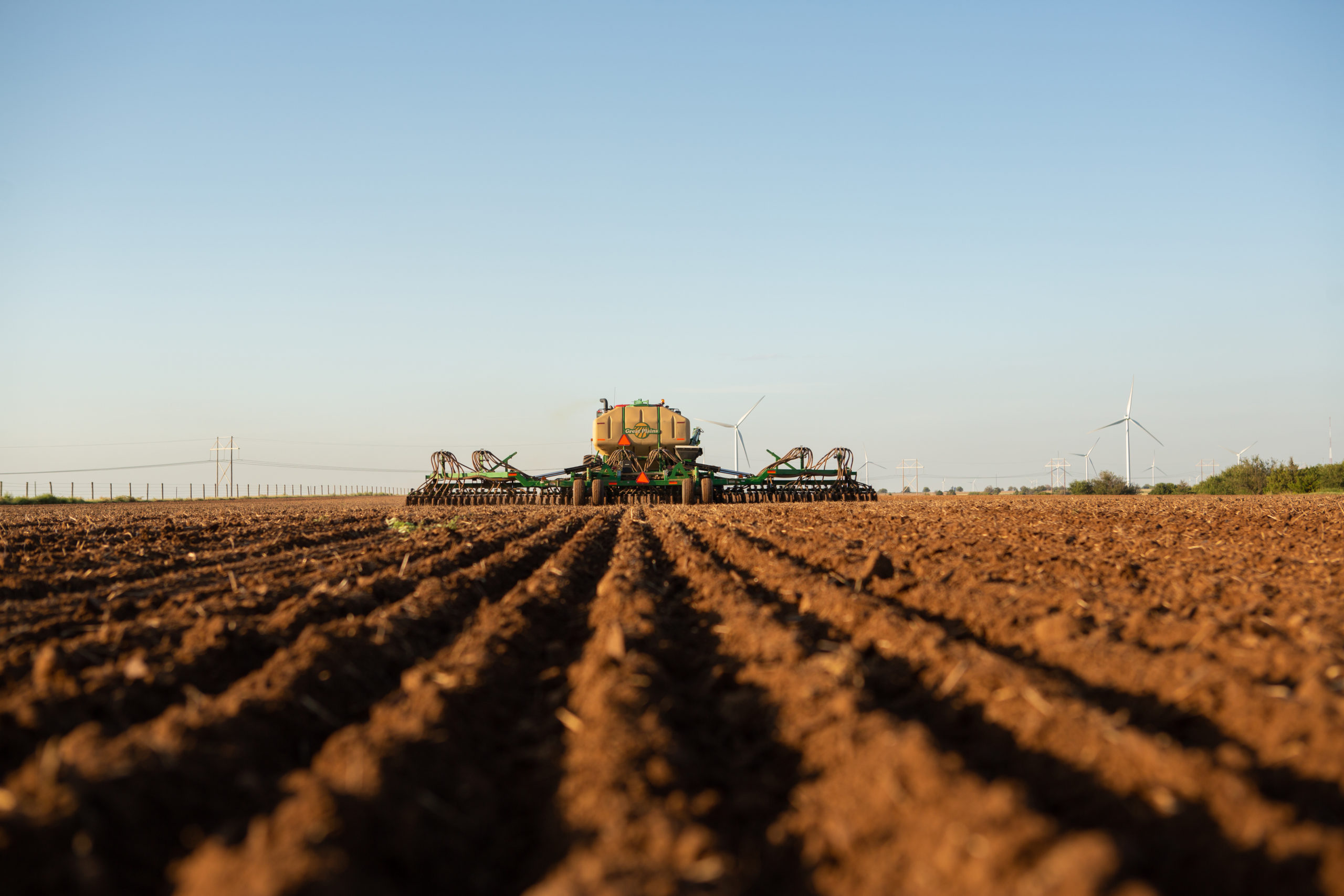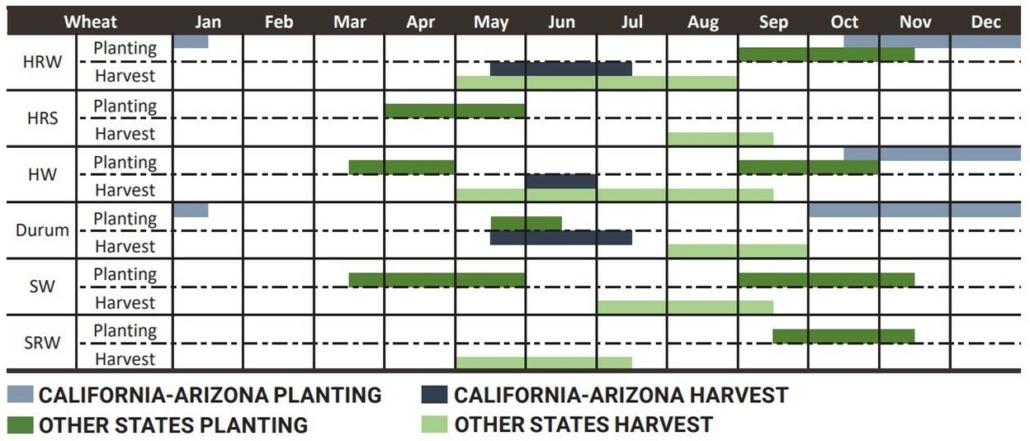Planting the Crop: U.S. Wheat Seeding Involves Careful Planning
While it might not result in the iconic photographs we see during harvesting, all of the planning, decision-making and factors that go into wheat seeding are a crucial part of the wheat production process. Preparing for planting looks different for every farm, depending on the region, the soil and the wheat class.
Wheat is grown or harvested every month of the year in the United States in 42 of the 50 states. U.S. agricultural areas differ dramatically in topography, soils and climate, so the kind of wheat grown varies widely by region. One of the factors that determine how classes of U.S. wheat are categorized is when it is planted.
U.S. winter wheat is planted in the fall, typically in September and October. The plant goes into dormancy over the winter months and begins growing again in the spring. Winter wheat is harvested starting in late May and through the summer. U.S. hard red winter and soft red winter varieties are all winter wheat.
U.S. spring wheat varieties of hard red spring and durum are planted in the spring, typically in April and May, and is harvested starting in August.
U.S. soft white and hard white wheat can be planted in either the fall or spring, depending on the variety the farmer chooses. The chart below breaks down when each U.S. wheat class is planted and harvested.
U.S. Wheat Seeding and Harvest Dates
As a part of its film, “Wholesome: The Journey of U.S. Wheat,” U.S. Wheat Associates (USW) is sharing individual chapters of the video throughout the year. “Seeding: Planting the Crop” tells the story of three family farms as they go through the wheat seeding season and put a new crop into the ground.



